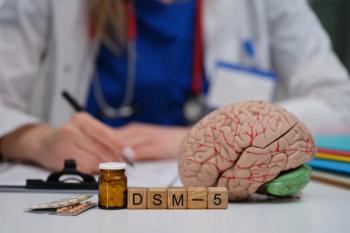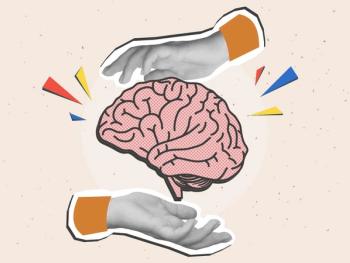
- Vol 32 No 9
- Volume 32
- Issue 9
Use of a Nasal Naloxone-Containing Kit in the Transition From Regional Psychiatric Hospital to Community Care: A 1-Year Follow-up Study
Details here about a protocol for opioid abusers and the mentally ill that helped avoid deaths from drug overdose after psychiatric hospitalization.
Unintentional drug overdose deaths have increased exponentially in the past decade. Ohio experienced a 366% increase in drug overdose deaths from 2000 to 2012. Over much of this 12-year period, prescription drugs were involved in the majority of unintentional drug overdose deaths. However, the 2012 Ohio overdose data, which included 1914 deaths, revealed a significant shift in this trend; there was an apparent leveling off of prescription opioid–related overdose deaths, accompanied by a large increase in non-prescription opioid, mainly heroin-related, deaths.
In terms of saving lives from opioid overdose, Nora Volkow, MD, Director of the National Institute on Drug Abuse (NIDA), highlighted the value of naloxone as an opioid antagonist, noting NIDA’s support of projects to develop intranasal delivery systems.1 She emphasized that naloxone has a high safety profile and no abuse potential and thus can be part of an effective approach to address the opioid overdose epidemic.
The Project DAWN (Deaths Avoided With Naloxone) kit is a component of the Overdose Education and Naloxone Distribution Program (OENDP) of the Ohio Department of Health in which participants receive training on drug overdose situations and the administration of intranasal naloxone to themselves and others.2,3
Project DAWN protocol
In March of 2014, the Twin Valley Behavioral Healthcare regional psychiatric hospital developed a protocol for the distribution of Project DAWN kits upon hospital discharge to patients identified with opioid substance abuse and mental illness (OSAMI). The protocol consists of 7 steps:
Step 1: All admitted patients are screened for substance use issues; those with patterns of regular opioid use are designated as OSAMI patients and the information is communicated to related treatment teams.
Step 2: An individualized treatment plan that integrates opioid and other substance use problems into the overall plan of care is completed.
Step 3: The Screening, Brief Intervention, and Referral to Treatment (SBIRT) evidence-based practice model4 offers OSAMI patients participation in specific substance abuse treatment interventions, including individual and/or group therapy and on-site recovery group participation, and scheduling them to meet with licensed independent chemical dependency counselors. The counselors subsequently collaborate with the patient and his or her treatment team to identify resources that can promote recovery and provide referral to community treatment and recovery resources for those patients desiring such services.
Step 4: All OSAMI patients are invited to participate in an educational session covering the general goals of Project DAWN and specific information about the Project DAWN kit.
Step 5: Completion of overdose risk assessment and a more detailed substance use assessment by the chemical dependency counselor assigned to the case for those patients participating in the educational session (Step 4).
Step 6: Patients sign a consent acknowledging their willingness to participate in the Project DAWN program and receive additional education and training on overdose situations and naloxone storage/secure transport/administration.
Step 7: The Project DAWN kit is prescribed by the patient’s attending psychiatric practitioner and filled by the hospital’s pharmacy.
The kit consists of a zippered fabric pouch containing a copy of the educational and training handouts, an instructional DVD, a quick reference guide, and 2 vials of naloxone for intranasal use. Unit nursing staff review the information on the use of naloxone (and all prescribed medication) at the time of hospital discharge.
Project DAWN findings
Data comparison (including diagnostic features, demographics, and duration of stay between the group of 1912 hospital admissions over the 12-month period from March 2014 to March 2015 and the 343 identified OSAMI patients) revealed a difference only in duration of stay: OSAMI patients had a shorter stay (9 days) compared with the total population of admitted patients (12 days). OSAMI patients who accepted a Project DAWN kit (204 patients) indicated that they did so based on their belief that it would save either their life or that of a friend in case of an overdose. Patients who decided not to participate reported being influenced by their perception of the complexity of configuring the naloxone vial for nasal inhalation and concern that possession of the kit could lead to stigmatization by law enforcement personnel (Table 1).
In a 30-day post-hospitalization discharge survey, 45 opioid substance abuse and mental illness patients who were provided a Project DAWN kit reported use of naloxone on a total of 50 occasions to address a drug overdose experienced by either themselves or another user. Men reported more frequent use of the naloxone for themselves while women reported more frequently providing the naloxone to others (Table 2).
Follow-up contact with OSAMI patients who did not accept the Project DAWN kit was not pursued. Future study of those patients would clarify differences in morbidity and mortality between patients who accepted the Project DAWN kit at hospital discharge and those who did not.
Conclusions and future directions
The implementation of the Project DAWN protocol has proven to be well-received by OSAMI patients and effective at avoiding deaths related to drug overdose, potentially saving 50 lives during its first year of implementation. The success of Project DAWN in achieving this life-saving goal establishes it as a critical and cost-effective component to support opioid substance abuse and mental illness patients returning to the community following discharge from a psychiatric hospitalization.
Improvements for the design of the Project DAWN kit were identified by responses from eligible patients who did not accept the kit, who cited concerns about the complexity of the device and possible stigmatization. Future directions for continuing and expanding the use of the kit should concentrate on addressing these concerns.
The post-discharge survey data indicate that at least a sub-group of patients utilized their Project DAWN kits for the intended purpose. The revealed use patterns for men and women (self-use versus providing naloxone to others) warrant further research to determine the validity of the findings and the implications for further refinement of the Project DAWN protocol.
Disclosures:
Dr Trevino is the Chief Clinical Officer and Director of Clinical Services, and Dr Raia is the Director of Psychology and SAMI Services at Twin Valley Behavioral Healthcare, a regional psychiatric hospital of the Ohio Department of Mental Health and Addiction Services. The authors report no conflicts of interest concerning the subject matter of this article.
References:
1. Volkow N. Nora’s Blog. Naloxone: a potential lifesaver. National Institute on Drug Abuse (NIDA). March 2014.
2. Project DAWN KIT the Overdose Education and Naloxone Distribution Program (OENDP) of the Ohio Department of Health.
3. The Ohio Department of Health Home Page. OENDP Project DAWN (Deaths Avoided with Naloxone).
4. SAMHSA. Screening, Brief Intervention, and Referral to Treatment (SBIRT).
Articles in this issue
about 10 years ago
A Review of Changes in DSM-5 Sleep-Wake Disordersabout 10 years ago
Sleep-Related Violenceabout 10 years ago
Parasomnias: What Psychiatrists Need to Knowabout 10 years ago
The Correlation Between Sleep Disturbance and Suicideabout 10 years ago
Sleep Disturbances After Traumatic Brain Injuryabout 10 years ago
Koryagin, Suspicious of Glasnost, Recounts Ongoing Soviet Abusesabout 10 years ago
PTSD in DSM-5: Understanding the Changesabout 10 years ago
Weight Loss Associated With Cholinesterase Inhibitors in the ElderlyNewsletter
Receive trusted psychiatric news, expert analysis, and clinical insights — subscribe today to support your practice and your patients.















